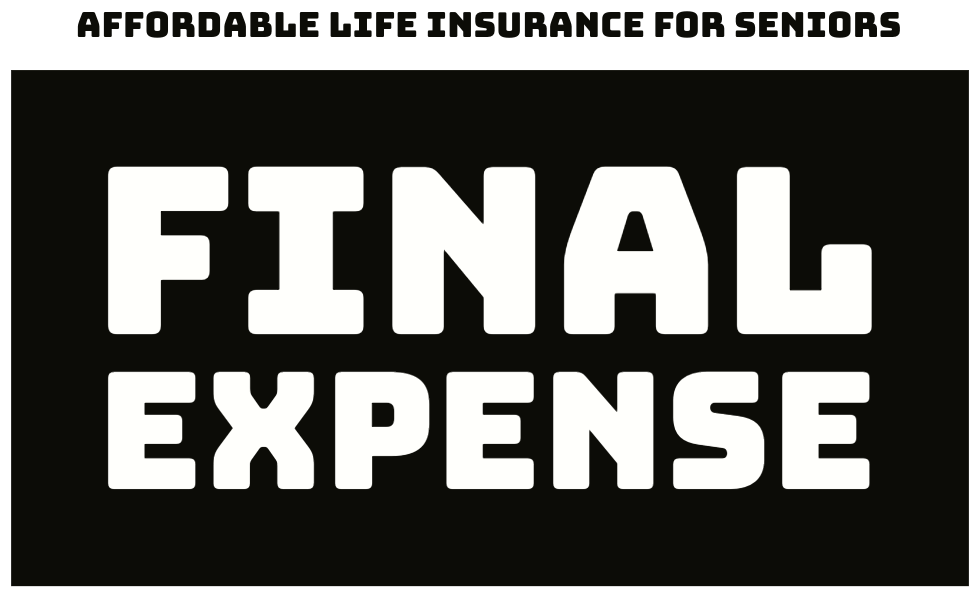Collateral assignee life insurance uses a life insurance policy as security for a loan. The lender gains rights to the policy’s benefits until the loan is paid off. This setup is crucial for borrowers looking to secure loans when they lack sufficient assets. It ensures lenders are repaid if the borrower dies or defaults.
Key Takeaways
-
A collateral assignee, typically a lender, gains specific rights to a life insurance policy’s cash value and death benefits to secure a loan, impacting the primary beneficiary’s payout.
-
Permanent life insurance policies, especially whole and universal life, are preferred for collateral assignments due to their cash value accumulation, while term policies are less secure.
-
If a loan secured by life insurance is defaulted, the lender is prioritized for payout from the insurance death benefit, potentially reducing the amount available for beneficiaries.
Understanding the Role of a Collateral Assignee in Life Insurance
A collateral assignee is a party that gains specific rights to the cash value and death benefits of a life insurance policy as security for a loan. The primary objective of collateral assignment is to protect the lender’s interest by ensuring that the loan will be repaid in the event of the borrower’s death or default. This setup limits the payout of death benefits to the unpaid loan balance, and the life insurance collateral assignment expires once the loan is repaid.
While this arrangement provides security to the lender, it also impacts the policy’s primary beneficiary. The primary beneficiary is no longer first in line for the death benefit due to the collateral assignment. Instead, if the borrower dies, the death benefit first pays off the loan, and any remaining amount goes to the primary beneficiary. This ensures that lenders are only entitled to the amount of the loan, protecting any remaining death benefits for the beneficiaries. The first priority is to ensure that the primary beneficiary receives what is owed after the loan is settled.
Collateral assignments can be used with existing or new life insurance policies, typically whole life policies that build cash value, though some lenders may allow term life insurance as well. Borrowers need to understand these dynamics to make informed decisions about using their life insurance policy as loan collateral.
Types of Life Insurance Policies Used for Collateral Assignment
Knowing the types of policies that can be used for collateral assignment of life insurance is important. Lenders often prefer permanent life insurance policies such as whole life or universal life, as these policies do not expire and accumulate cash value, providing more security. The cash value component of these policies offers an additional layer of assurance to the lender.
While whole life policies are the most common choice for collateral assignments due to their cash value, some lenders may accept term life insurance policies. However, term policies do not build cash value and expire after a certain period, making them less secure for lenders compared to permanent life insurance policies.
Knowing the lender’s preferences and the policy’s features is key when using life insurance as collateral.
How Does Collateral Assignment Work?
Collateral assignment of life insurance works by leveraging the policy as security for loan repayment. When a borrower lacks sufficient assets or income, a life insurance policy can be pledged to secure the loan. The process begins with the borrower completing the loan application with the lender, indicating the use of life insurance as collateral.
Next, the borrower must fill out the collateral assignment form, which includes details about the loan, such as its amount and repayment terms. Both the borrower and the lender must sign the collateral assignment form to officially designate the lender as the collateral assignee. Once the loan is funded, the borrower continues to pay premiums on the life insurance policy as usual.
Adequate coverage requires that the life insurance policy’s face value be at least equal to the loan balance. This arrangement guarantees that the lender’s interests are protected, while the borrower can still access the benefits of their life insurance policy from insurance companies.
Setting Up a Collateral Assignment of Life Insurance

Setting up a collateral assignment of life insurance involves several key steps. It begins with consulting the lender and insurer to understand the specific requirements and completing the necessary documentation. This process ensures that all parties are aligned and that the collateral assignment is executed correctly.
The following subsections explore the critical aspects of setting up a collateral assignment. This includes:
-
Reviewing the lender’s requirements
-
Exploring options for using existing or new life insurance coverage
-
Providing detailed guidance on completing the collateral assignment forms.
Reviewing Lender’s Requirements
Understanding the lender’s criteria for accepting life insurance as collateral is crucial before initiating a collateral assignment. Each lender has specific requirements related to the type of life insurance accepted, the minimum face value, and other conditions. Reviewing these requirements beforehand can save time and ensure that your policy meets the lender’s expectations.
Evaluating if your existing life insurance policy meets the lender’s minimum face value requirement helps determine whether you can use your current policy or need to purchase a new one.
Establishing or Using Existing Life Insurance Coverage
An eligible existing life insurance policy can be used for collateral; otherwise, a new life insurance policy needs to be purchased. First, check whether the lender accepts your existing policy. If not, you would need to buy a new policy to meet their requirements.
Permanent life insurance policies often accumulate cash value that can be accessed through withdrawal or loans, serving as an alternative source of funds. Accessing funds by borrowing against an existing life insurance policy’s cash value eliminates the need for collateral assignment and provides life insurance benefits. Additionally, understanding a policy’s cash can help policyholders make informed financial decisions.
Completing the Collateral Assignment Forms
The collateral assignment form requires details about the loan, such as its amount and repayment terms. The form typically includes the loan amount and the lender’s information. Both borrower and lender must sign the collateral assignment agreement to officially designate the lender as the collateral assignee.
Once the collateral assignment form is completed and signed, the lender is officially added as the collateral assignee.
Examples of Collateral Assignment Usage
Life insurance is commonly used in collateral assignments to secure business loans and personal finance. For example, a business owner might use a whole life insurance policy with cash value as collateral for a loan. This secures the needed funds for the business owner while ensuring beneficiary protection.
For example, a florist might seek a $50,000 loan backed by a $300,000 life insurance policy to support business growth and ensure beneficiary protection. Collateral assignment ensures that beneficiaries receive any remaining death benefits after the loan is repaid, providing a safety net for their money.
Additionally, choosing life insurance as collateral can lead to lower interest rate compared to typical unsecured loans.
Pros and Cons of Using Life Insurance as Collateral
Using life insurance as collateral offers several advantages:
-
It optimizes financial strategy by providing a secure way to obtain a loan.
-
Lenders often prefer permanent life insurance over term insurance for collateral because permanent coverage doesn’t expire and builds cash value.
-
This arrangement guarantees loan repayment, providing peace of mind to both lender and borrower.
However, there are potential drawbacks to consider. Beneficiaries may receive fewer benefits if debts are owed on the policy. If the borrower defaults on the loan, lenders can cash in the policy to recover the outstanding loan balance amounts, paying off the debt through policy loans. If you need to borrow money, it’s essential to understand these implications.
Using term life insurance as collateral poses the risk that coverage ends at expiration, potentially leaving the lender without collateral if the loan isn’t paid off before then. There is also the risk of not having enough coverage for beneficiaries when using life insurance as collateral.
Having existing life insurance, meeting health qualifications for a new policy, and addressing life insurance needs are important considerations before entering a collateral assignment.
Alternatives to Collateral Assignment of Life Insurance

Several alternatives to securing funding do not involve collateral assignment of life insurance. Unsecured loans can be a more affordable option compared to a secured loan, particularly for borrowers with good credit scores. These personal loans do not require collateral, making them a viable option for those who qualify.
Home equity loans and lines of credit allow homeowners to borrow against property equity, providing another way to secure funding without using life insurance. These alternatives help businesses secure a home equity line or a business loan without risking the owner’s personal assets.
Managing Your Life Insurance Policy During Loan Term
Using permanent life insurance as collateral can affect access to the policy’s cash value during the loan period. Staying informed about interest rates is crucial as increases can significantly affect the loan balance and repayment strategy. Annual illustrations from the insurer help track the impact of loans on cash value and death benefit.
Regular consultations with your financial advisor can help adapt your management strategy based on market trends and personal circumstances. This proactive approach ensures optimal decision-making to remain current for both your loan and life insurance policy.
What Happens If You Default on the Loan?
In case of default on a loan secured by life insurance, the lender receives a payout from the policy. The lender receives payment from the life insurance death benefit before beneficiaries in case of default. This ensures that the lender’s interests are protected.
If the loan isn’t fully repaid at the time of the policyholder’s death, beneficiaries receive a diminished payout. Partial or full non-repayment of the loan impacts beneficiaries’ financial security significantly, including the policy’s death benefit.
Changing or Ending a Collateral Assignment
Terminating a collateral assignment requires submitting a request to your insurance provider along with proof of debt repayment. Confirm with the lender that the collateral assignment debt is fully paid before proceeding with the release. Once the collateral assignment is released, your insurer should confirm that the assignment has ended.
Failing to change your collateral assignment after debt repayment can cause delays in beneficiaries receiving payouts due to outstanding collateral assignments.
Summary
In summary, collateral assignment of life insurance offers a strategic way to secure loans while protecting beneficiaries. Understanding the role of a collateral assignee, the types of policies used, and the detailed process of setting up and managing a collateral assignment is crucial. While there are significant benefits, it is also essential to consider the potential drawbacks and explore alternatives.
Making informed decisions about using life insurance as collateral can optimize your financial strategy and provide peace of mind. Whether you are a business owner or an individual borrower, this guide equips you with the knowledge to navigate collateral assignments confidently.
Frequently Asked Questions
What is a collateral assignee in life insurance?
A collateral assignee is a party entitled to the cash value and death benefits of a life insurance policy, serving as security for a loan. This arrangement provides the lender with assurance and recourse in case of default.
Can term life insurance be used for collateral assignment?
Yes, term life insurance can be used for collateral assignment, although lenders typically prefer permanent life insurance policies because of their cash value and duration.
What happens if I default on a loan secured by life insurance?
If you default on a loan secured by life insurance, the lender will receive the payout from the policy’s death benefit before any funds are allocated to your beneficiaries. This means your beneficiaries might receive less than expected.
How do I set up a collateral assignment of my life insurance policy?
To set up a collateral assignment of your life insurance policy, you must consult both your lender and insurer, complete the required documentation, and adhere to any specific regulations set forth by your lender. This ensures that the assignment is legally recognized and meets all necessary criteria.
Are there alternatives to using life insurance as collateral for a loan?
Yes, alternatives to using life insurance as collateral for a loan include unsecured loans and home equity loans, which do not depend on life insurance coverage.
